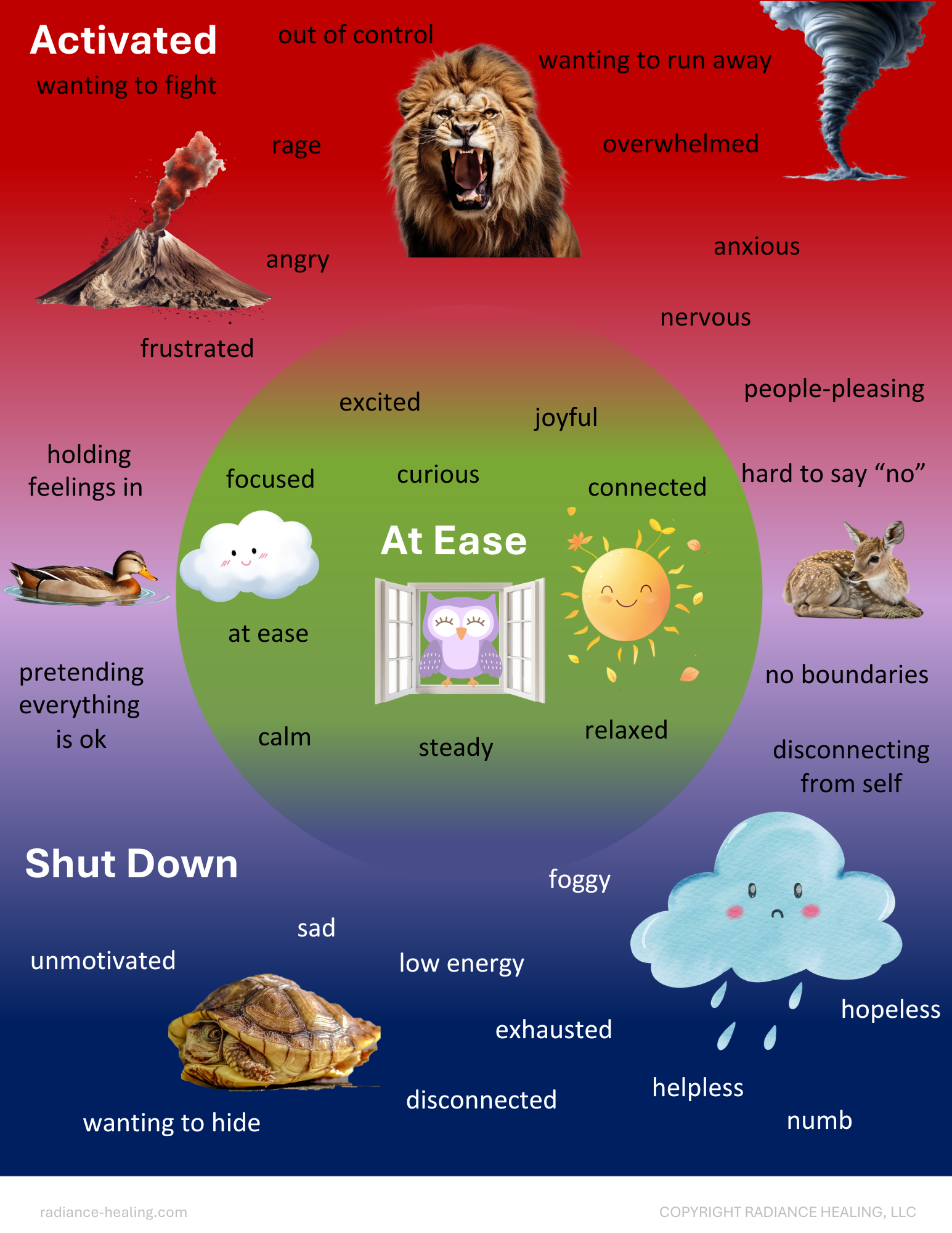Rewiring for Resilience
Let’s be real - stress is unavoidable. Even with nervous system support like SSP, the goal isn’t to be in a state of regulation and calm all the time. The goal is to develop a more resilient nervous system that can move in and out of stress states when needed. It becomes a problem when you become stuck in a stress state for longer than necessary - or if a stress state becomes your baseline state.
Each of us has unique wiring in our nervous system, and some are more resilient to stress than others. Some of us have naturally more sensitive nervous systems that are more easily stressed or more impacted by negative events than other people.
In our day-to-day lives, our nervous system should shift between different states depending on whether we feel safe or in some level of threat.
Ideally, you will most often be in a state of safety, connection, and wellbeing - the “green zone”. When you need to, you can shift into a stress state and utilize the change in energy to handle a challenge. Then, once the challenge has been addressed, you should shift back to the green zone again, living there most of the time.
If you’re able to do that, it means your baseline is in a state of ease and safety.
Introducing the stress states. In an activated state, stress hormones send extra energy throughout your body to help you move into “fight or flight” defense. If your baseline is in activation, you may often feel anxious.
If your system doesn’t think that fighting or running away from the situation will help, or if you’ve been in state of activation for too long, it will shift to an approach of conserving energy and shutting you down. This is also called the “freeze or fawn” defensive state. If your baseline is in shut down, you may have a tendency to feel depressed.
Sometimes, people experience a mix of activation and shutdown, feeling anxious and depressed at the same time.
Your baseline - or your level of resilience - may have shifted over time based on all sorts of life experiences, stressors, and relationship dynamics. Is your baseline somewhere outside the green zone, or do you often swing into or get stuck a stress state? Thanks to a concept from brain science called neuroplasticity, we understand that patterns that have been wired into your nervous system can change. SSP can help your nervous system become more resilient.
One of the great things about SSP is that you do not necessarily have to understand why your baseline is in a stress state in order to shift it. SSP combined with energy healing is quite effective in shifting stuck patterns - whether they are inherited or those you’ve developed throughout your lifetime.
And for children and teens, SSP can support more ease and resilience in their developing nervous system - a gift that will benefit their wellbeing now and in the future. 💖
Photo credits: Disney Pixar
Reflect
The first image contains words that are often associated with the different nervous system states.
Think about your own experience shifting between ease, activation, and shut down. What words, emotions, or bodily feelings do you connect with in each state? Are there certain images or colors that help you visualize your own unique experience of each state? You can use this as a starting point to visualize the states in a way that makes sense to you.
I also love this version with characters from the Pixar movies, Inside Out and Inside Out 2. If you haven’t yet seen them, I highly recommend watching! The way they portray the emotional experience of humans is so relatable and can help you reflect about how your brain and body work together to help you get through life.
I love having either of these images handy for kids, to help them connect with and share their own experiences in the different nervous system states. They can also create their own collage version, with words, colors, and images that resonate with how they feel when they shift between states!


